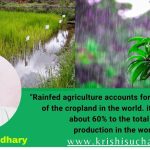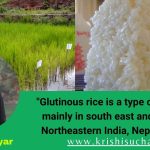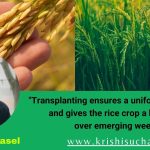DRAGON FRUIT IN NEPAL: CULTIVATION, POSSIBILITIES AND CHALLENGES

Dragon fruit also known as Pitahaya or pitaya has brought to Nepal by veterinary doctor Mr. Jagannath Rai in 2057 B.S. It is a climbing type vines of cactus species. It’s originated from America. It was initially cultivated in Dhankuta and Jhapa for trail in Nepal. But now it is started cultivating by young framers basically agriculture student at different places. Ex. Minister Lokender Bist Magar is also involved in dragon fruit cultivation at Dang. The color of fruit is red (with white color flesh), yellow (with white color flesh), red (with red color flesh) or purple depending on variety. It belongs to the genus of ‘Hylocerous’.
VARIETIES:
Several varieties of dragon fruits are cultivated. Among them popular varieties are Hylocereus polyrhizus (red flesh dragon fruit), Hylocereus guatemalensis (magenta flesh dragon fruit, commercially known as America beauty), Hylocereus undatus (white flesh dragon fruit).
In Nepal, popular variety is Hylocerous undatus.
CULTIVATION PRACTICES:
Dragon fruit cultivation in most suitable for tropical climatic region. Usually, it survives in poor soil condition and temperature variation. Temperature ranges for its cultivation is around 20 to 30˚c. Average rainfall suited is 40-60 cm. It can grow in almost any soil however sandy soil with good irrigation is preferred. Soil ph. 5.5 to 6.5 is best. At active growing season, fertilizer should be given every month and during cold winter you can stop giving fertilizer for few months. The base of plant can grow in low shade but tips of plant requires full sunshine for proper blooms.
PROPAGATION METHODS:
- Dragon fruit from seed: Direct fruit seed can be cultivated. Make sure that soil is moist and cover it with plastic until it germinates. And it germinates in 10 to 15 days.
- Dragon fruit from cutting: The cutting done from parent plant should be 3 to 6 inches. Apply fungicides to the end so that it promotes growth.
BENEFITS OF DRAGON FRUITS:
Many people are not aware about the benefits of dragon fruit as it is newly introduced in Nepal as well as the cost of fruit is very high (800-1000 per kg). so, its consumption is less among Nepalese people. Some of the benefits are:
- Helps to raise hemoglobin and immunity power, source of antioxidants, preventing arthritis, controlling diabetes, lowering cholesterol, improving heart health, weight management, fighting against ageing, preventing asthma are the health benefits.
- Useful for pregnant woman and promotes regeneration of body cells.
- Nutritional value of dragon fruit is high rich in fiber, fat, protein (3.57%), vitamin c (9.2 mg) and minerals.
- It can be the greatest source of self-employment for the young farmers. And knowledge towards their growth can create job opportunity among others.
POSSIBILITIES IN NEPAL:
As, Nepal is an agricultural country. Above 60% of people are involved in agriculture. So, the cultivation of dragon fruit among farmer can be the source of income. Nepal has a wide range of marginal and follow land in tropical and sub-tropical region. Such land can be fully utilized for its cultivation. The cultivation practices of dragon fruit are also easy it can grow in wide range of soil and requires minimum manure for the growth.
CHALLENGES FOR PRODUCTION:
As our country farmer are very poor. The initial cost of field establishment is quite expensive. Our poor farmer is unable to grow it. The knowledge about new crop and techniques of growing among farmer is very less. So, they easily don’t adapt new crop in their area. The cost of fruit is slightly high than other fruit. So, it should be sold in big market, but the coordination between the market people and farmer is very rare. The farmer of Nepal usually practices subsistence farming. So, they usually don’t change their farming practices. These are the various challenges for dragon cultivation.
SOLUTION FOR DRAGON CULTIVATION:
- Provide agro-training to farmers.
- Establish more agro-based industries.
- The product produced should be utilized by government.
- Helps to establish coordination between market people and farmers.
- There should be a system of agriculture loan to the farmers.
- Global good market relation should be maintained.
There is not so much problem in dragon fruit cultivation. It is not usually affected by environment. Although cold temperature and extreme high temperature is not favorable can cause sun scald. So, there should be proper shade management especially to young plants. The pest and disease occurrence are also less. Some disease like Anthracnose (Colletotrichum gloeosporides) cause halo-like concentric on stems and fruits, Bioparis cactivora causes black/ brown spotting, Botryosphaeria dothidea causes blotchy red/ brown lesion on stems and new cactus virus X also effect the fruit.
Treatment of fungal disease can be done by the application of a copper fungicide. But the best way to manage is to practice good sanitary measures.
Writer: Paras Ghimire (Student, Bsc Ag., IAAS, Prithu Technical College, Lamahi)

 दिल्लीको होटलमा बसेर क्यानडा र अमेरिकामा मानव तस्करी
दिल्लीको होटलमा बसेर क्यानडा र अमेरिकामा मानव तस्करी  अनलाइन जुवा खेलाएर काभ्रेका अनिलले गरे दुई अर्बको कारोबार
अनलाइन जुवा खेलाएर काभ्रेका अनिलले गरे दुई अर्बको कारोबार  मुख्यमन्त्री सोडारीले विश्वासको मत लिन सुदूरपश्चिमको प्रदेश सभा बैठक आव्हान
मुख्यमन्त्री सोडारीले विश्वासको मत लिन सुदूरपश्चिमको प्रदेश सभा बैठक आव्हान  अफगानिस्तानमा बाढीबाट ३१५ भन्दा बढीको मृत्यु
अफगानिस्तानमा बाढीबाट ३१५ भन्दा बढीको मृत्यु  सुँगुरको मिर्गौला प्रत्यारोपण गरिएका रिचर्डको निधन
सुँगुरको मिर्गौला प्रत्यारोपण गरिएका रिचर्डको निधन 


